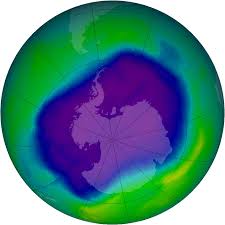记忆方法
记忆“ozone”这个单词,可以将其拆解为“o”和“zone”,然后将“o”想象成一个代表氧的圆圈,而“zone”则代表区域。组合起来,就可以想象成一圈圈环绕的氧气区域,这正是臭氧层的特征。这样的形象记忆可以帮助你记住“ozone”表示臭氧层。
以上内容由AI生成, 仅供参考和借鉴
中文词源
ozone 臭氧
来自希腊语ozein,闻,嗅,散发气味,来自PIE*od,词源同odor,olfactory.-one,化学名词后缀。字母d,z音变,比较Zeus,deus(拉丁语,神).
英语词源
- ozone
-
ozone: see odour
- ozone (n.)
- 1840, from German Ozon, coined in 1840 by German chemist Christian Friedrich Schönbein (1799-1868) from Greek ozon, neuter present participle of ozein "to smell" (see odor). So called for its pungent odor.
权威例句
- 1. Ozone is a highly reactive form of oxygen gas.
- 臭氧是一种非常活跃的氧气形态。
- 2. Ozone is produced by the reaction between oxygen and ultra-violet light.
- 臭氧由氧气和紫外线发生反应而产生。
- 3. Every spring the ozone is chewed up, and the hole appears.
- 每年春天,臭氧遭到破坏,空洞就出现了。
- 4. In heavy concentrations, ozone is irritating to the eyes, nose and throat.
- 高浓度的臭氧会对眼睛、鼻子和咽喉有刺激作用。
- 5. The W.H.O. safety standard for ozone levels is somewhere about a hundred.
- 世界卫生组织关于臭氧层的安全标准约为100。
